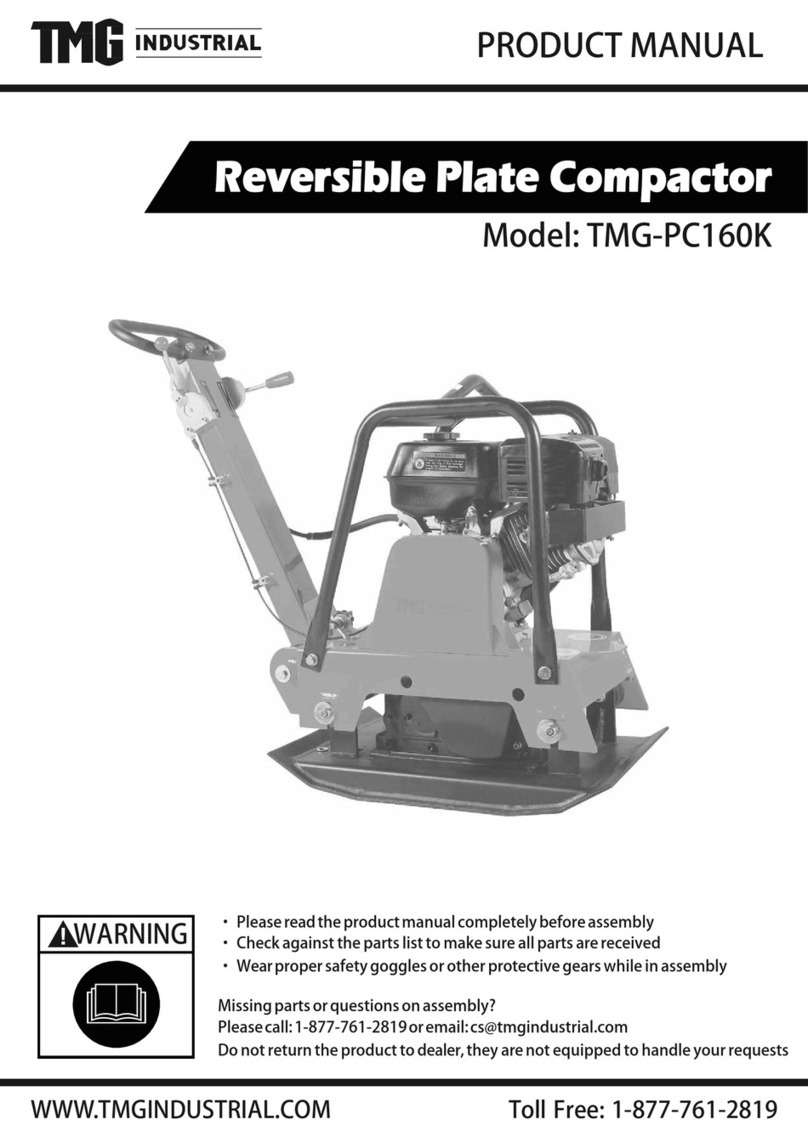
4
FB 515
Doc: 101533-GB 2104
SAFETY INSTRUCTIONS
• Before using the machine, the operator must be informed
of the manufacturer’s safety instructions and instructions
for use.
• The machine may only be used outdoors.
• The machine may not be used if protection and safety de-
vices are not present or not working.
• The operator may not leave the machine unattended when
the engine is on. The machine is equipped with a Dead
Man’s Switch to prevent this. When the vibrator is con-
nected, the operator must be able to control the movement
of the machine using the operating lever and the start/stop
controls. The machine may only be operated by a trained
operator.
• During maintenance work or other interventions in the
machine, the engine must always be o.
• Switch the engine o before adding fuel. Avoid fuel spill-
age and immediately wipe o any spilled fuel. Add fuel
only in well ventilated areas.
• Avoid touching hot engine parts, for example the silencer.
• Before lifting the machine, check that the lifting device and
its mounting are not damaged and that the rubber dampers
on the base plate are undamaged and tightened.
• During transportation and storage, the fuel tank should be
empty and the fuel cock switched o.
• When the machine is parked, ensure that it cannot tip over.
The machine must not incline more than 20º.
• The operator must use ear protectors when working with
the machine.
• The operator must ensure that no unauthorised persons are
in the immediate vicinity of the machine.
• Always wear personal protective equipment as heavy, non-
slip shoes, ear protectors and approved eye protection.
• The machine may not be used in environments with poten-
tial re or explosion danger.
• Never use the machine if you are tired or have consumed
alcohol or are using medication that could aect your vi-
sion, your discretion or your coordination ability.
• Never use a machine that, in any way, has been changed
from its original design.
STANDARDS
Noise
Measurement according to the standard EN 500-4 Rev.1:
1998, Annex C:
Measurement uncertainty ± 0,5dB (A) i 95% of
measurements.
In accordance with the conditions in Directive 2000/14/EC,
Annex VI, the following values are reported:
FB 515
Sound pressure level at the operator’s ears, LpA 93 dB (A)
Permitted sound power level, L WA 108 dB (A)
Guaranteed sound power level, L WA 108 dB (A)
Since the sound pressure level in the operator’s ears
exceeds
80 dB (A), ear protectors must be used during operation!
Hand/arm vibration
Vibration acceleration has been measured according to the
ISO 5349 standard when driving on macadam substrates.
The measured values have been converted to maximum
daily exposure during regular use. Further information
is available in the work environment regulations AFS
2005:15 on vibration, valid from 1 July 2005.
Measurement uncertainty ± 0,3 m/s2 i 95 % of
measurements.
FB 515
Hand/arm vibration, m/s22.6
Maximum daily exposure 7,4h
Exhaust Emissions
FB515 meets the requirements for exhaust emissions in
accordance with Euro V.
Additional information
Environmentally approved for use in large cities.
































